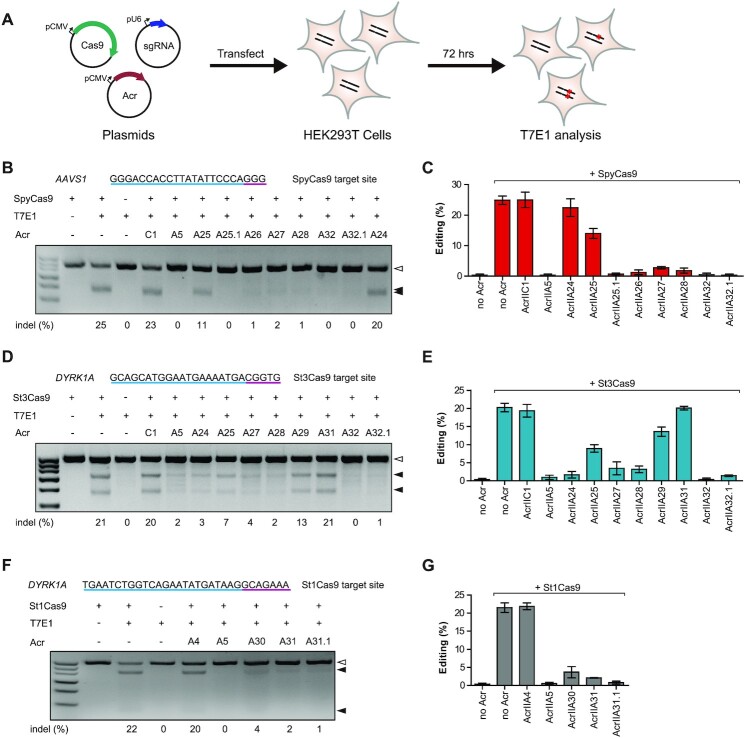Figure 4.
AcrIIA24–32 inhibit different Cas9-mediated gene editing in human cells. (A) Schematic view of T7E1 assay to examine Acr inhibition against Cas9 orthologs in HEK293T cells. Cells were co-transfected with plasmids encoding Cas9, sgRNA and Acr and subsequently analyzed through T7E1 assay. Representative gel images of T7E1 assay to manifest the inhibitory activities of Acrs against SpyCas9 (B), St3Cas9 (D) and St1Cas9 (F). The target sites of human AAVS1 (targeted by SpyCas9) and DYRK1A (targeted by St1Cas9 and St3Cas9) are shown at the top of each gel and PAMs are highlighted in purple. Acr subtypes and numbers are indicated. A, AcrIIA; C, AcrIIC. Hollow arrowheads indicate the T7E1-undigested bands (unedited). Solid arrowheads indicate T7E1-digested bands (edited). The editing efficiencies [indel (%)] are labeled at the bottom of each lane. Quantification of gene editing efficiencies of SpyCas9 (C), St3Cas9 (E) and St1Cas9 (G) is shown in the presence of different Acrs. Error bars represent the mean ± SEM with three biological replicates.

